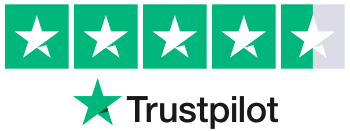
Every business owner knows the struggle – capturing attention and turning browsers into buyers. That’s where marketing copy comes in, acting as your silent salesperson, weaving words that enchant customers and drive action.
This powerful tool goes beyond just listing features. It can be a compelling story, a sparkling introduction, or an informative explanation – all tailored to resonate with your target audience. Through this article from Alpha Academy, we’ll dive deep into the world of marketing copy, unveiling its secrets and empowering you to:
- Understand what it is and its impact
- Identify the hallmarks of winning copy
- Differentiate between copywriting and content marketing
- Craft your powerful messages that convert
Get ready to unleash the magic of words and watch your business thrive!
Table of Contents
What is Marketing Copy?
In one sentence, marketing copy is simply writing that persuades. It’s your silent salesperson guiding readers towards a specific action, whether buying your product, subscribing to your service, or simply reading more. This versatile tool goes beyond selling; it educates your audience, provides valuable resources, and connects them with your brand.
There are different forms of marketing copy. They are:
- Long-form content: Deep dives into articles and blog posts (1,000+ words) that explore topics related to your product or service, establishing you as an industry expert. In Alpha Academy, we have a course titled Content Writing and Editing Course for the aspiring content writer, which you may have a look at.
- Short-form content: Snackable, punchy pieces (500-800 words) that capture attention quickly and deliver key messages effectively.
- Website copy: The narrative of your brand, weaving your company history, staff bios, and service descriptions into a compelling story on your website.
- Social media posts: Engaging snippets designed to spark conversations and promote your offerings on platforms like Twitter, Instagram, and Facebook, often leading directly to purchase options.
- Sales copy: Descriptions highlighting product features and benefits in advertisements, brochures, and catalogues, converting interest into action.
- Technical copy: User guides, white papers, and proposals clearly explain product functionalities and provide customer support, building trust and expertise.
- Public relations copy: Press releases and company statements crafted to shape public perception and build a positive brand image.
No matter your goal, marketing copy gives you the words to achieve it. So, choose your tools wisely, craft your message, and watch your audience respond!
What Makes a Marketing Copy Good
Several factors contribute to the effectiveness of marketing copy, including:
- A Compelling Call-to-action: Effective marketing copy motivates readers to engage further, prompting immediate action.
- Readability and Persuasive Language: The copy should be straightforward, engaging, and convincing.
- Problem-Solving Approach: It targets the audience’s needs, concerns, or interests by identifying issues and proposing solutions.
- Emotional Engagement: Engaging copy might evoke emotions, humour, or surprise, making the product or brand memorable by sparking strong emotional responses.
- Reflection of Brand Identity: It communicates the unique aspects of a brand, product, or service, acting as a representation of the company’s personality.
Successful marketing copy is measured by its ability to achieve productivity and ROI objectives, evident through:
- Boosted website traffic
- Higher click rates
- An increase in inquiries via email or phone
- More newsletter sign-ups
- Longer website engagement times
- Enhanced social media interaction, such as more likes, comments, shares, and follows.
- A better conversion rate indicates a rise in the number of visitors or followers turning into customers.
Difference Between Copywriting and Content Marketing?
Copywriting and content marketing serve different purposes and use different approaches to engage audiences effectively.
Purpose:
- Copywriting: Primarily aims to persuade the audience to take a specific action, such as making a purchase, signing up for a service, or subscribing to a newsletter. It often focuses on crafting compelling messages with clear calls to action to drive immediate response.
- Content Marketing: Focuses on building brand awareness, establishing thought leadership, and nurturing long-term relationships with the audience. It aims to provide valuable, relevant content to attract and retain customers, ultimately driving profitable customer action over time.
Scope:
- Copywriting: Typically involves short-form content optimised for quick consumption and action. It includes elements like headlines, taglines, product descriptions, and advertising copy designed to capture attention and prompt immediate response.
- Content Marketing: Content Marketing contains a broader range of content types and formats, including articles, blog posts, videos, podcasts, infographics, and social media posts. It highlights storytelling, education, and entertainment to engage audiences and build trust and credibility over the long term.
Strategy:
- Copywriting: Relies on persuasive language, compelling storytelling, and a deep understanding of consumer psychology to drive conversions. It often involves crafting attention-grabbing headlines, highlighting product benefits, and creating a sense of urgency or scarcity.
- Content Marketing: Focuses on providing valuable, informative, and entertaining content that resonates with the target audience’s interests, challenges, and aspirations. It emphasises building relationships and fostering engagement through consistent, high-quality content that addresses the audience’s needs and preferences.
In summary, while copywriting is geared towards immediate action and conversion, content marketing takes a more holistic approach, focusing on building brand awareness, trust, and loyalty through valuable and relevant content over time. Both are essential components of a comprehensive marketing strategy, each engaging and nurturing audiences uniquely throughout their customer journey.
How to Write Powerful Marketing Copy
Now, we’ll have a look at the 21 tips for writing engaging and effective marketing copy.
- Establish Your Objectives: Before crafting any copy, define your specific objectives. Whether it’s driving website traffic, growing social media followers, or increasing foot traffic in-store, clarity on your goals enables you to brainstorm tailored solutions and seamlessly integrate them into your copy. With a clear understanding of your goals, you can choose the appropriate marketing copy type, be it a blog post or an advertisement.
- Understand Your Audience: Identify your ideal customer and conduct comprehensive research into their persona, including their likes, dislikes, lifestyle, family habits, career aspirations, interests, hobbies, and major concerns. This deep understanding of your audience effectively enables you to cater to their wants and needs.
- Use Appropriate Tone: Ensure that your marketing copy’s voice and tone align with the represented company’s values and culture. For instance, while an international corporate law firm may benefit from a formal, professional tone, a local skateboard shop might opt for a casual, conversational, and friendly tone.
- Craft a Persuasive Opening: Capture readers’ attention quickly by choosing bold, descriptive headlines that clearly convey the information you’re providing and why it’s relevant to them. Use strategies such as posing questions, providing practical advice, or sharing personal reflections to engage your audience.
- Prioritise the Reader: Centre your writing around the reader’s interests and emotions, using “you” and “your” statements to establish a connection. By focusing on the reader’s perspective, you can create copy that resonates with their needs and desires.
- Offer Solutions: Identify the specific needs of your target audience and highlight how your products or services can address those needs effectively. For example, a dog grooming business targeting busy professionals might promote mobile grooming services to accommodate their hectic schedules.
- Create Exclusivity: Generate a sense of exclusivity by providing a glimpse of valuable content and encouraging readers to take action to access more. This could involve subscribing to a newsletter or providing contact information in exchange for exclusive deals or additional content.
- Appeal to Emotion: Harness the power of emotional language to evoke strong feelings and foster reader engagement. Tailor your copy to elicit emotions such as shock, surprise, joy, comfort, or anger, depending on your marketing objectives.
- Add Humor: Use humour strategically to make your brand memorable and encourage sharing. Whether through witty remarks, playful language, or clever wordplay, incorporating humour can help humanise your brand and resonate with your audience.
- Clarify Complex Concepts: Enhance the clarity and impact of your copy by using examples, metaphors, and analogies to illustrate abstract concepts or processes. This approach makes your content more accessible and memorable to readers.
- Highlight Unique Benefits: Distinguish your products or services from competitors by showcasing the unique benefits and features that set your brand apart. Whether it’s handcrafted products, environmental sustainability, industry awards, or community involvement, emphasise what makes your offerings special.
- Incorporate Statistics: Boost the credibility of your copy by integrating relevant statistics and numerical data. Quantifiable information adds weight to your claims and helps persuade readers of the value of your products or services.
- Simplify Your Message: Ensure clarity and readability by simplifying your writing style. Use shorter sentences, paragraphs, and reader-friendly language to convey your message effectively.
- Utilise Customer Testimonials: Enhance trust and credibility in your copy by including testimonials and success stories from satisfied customers. Real-life experiences and endorsements help validate your brand’s claims and reassure potential customers.
- Show, Don’t Tell: Instead of simply describing features or services, demonstrate the benefits through vivid imagery and action-oriented language. Show readers how they will benefit from your offerings rather than just telling them.
- Use Active Verbs: Opt for active verbs over passive ones to invest your copy with energy and urgency. Active language propels the reader forward and encourages action, making your copy more compelling and engaging.
- Create Clear Calls to Action: Prompt readers to take specific actions by including clear and creative calls to action in your copy. Whether it’s urging them to call, visit a website, sign up for a newsletter, or make a purchase, ensure that your CTAs are concise, compelling, and tailored to your objectives.
- Optimise for Different Mediums: Tailor your copy for different mediums to maximise effectiveness. Whether you’re writing for the web or print, optimise your content accordingly, incorporating SEO techniques for online copy and engaging headlines for print materials.
- Edit and Refine: Review and edit your copy to refine your ideas and ensure clarity, coherence, and consistency. Incorporate organisational elements, remove extraneous content, and polish your writing for spelling and grammar errors.
- Seek Feedback: Invite feedback from peers, colleagues, or supervisors to gain valuable insights and ensure your copy effectively communicates your intended message. Fresh perspectives help identify areas for improvement and enhance the overall quality of your writing.
- Test and Iterate: Experiment with different versions of your copy and track their performance using relevant metrics such as click-through rates, conversions, and engagement levels. Use data-driven insights to refine your approach and optimise your copy for maximum impact and effectiveness.
Conclusion
Remember, marketing copy is a conversation starter. It’s your chance to connect with your audience, pique their interest, and, ultimately, guide them towards a desired action. With a little planning, practice, and the tips you learned here, you can write marketing copy that sizzles and sells. Keep refining your skills, experiment with different styles, and never stop learning. Your next headline may go viral!










